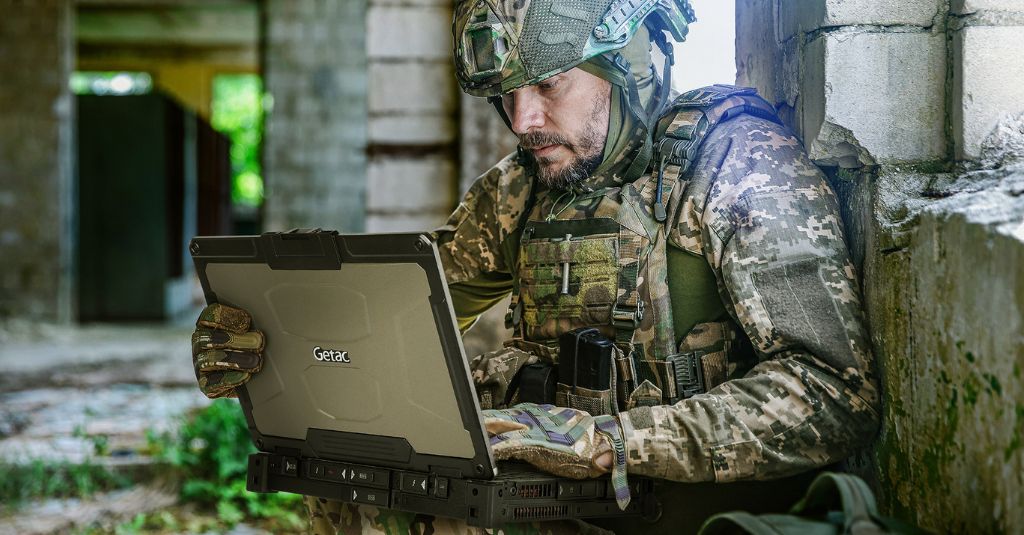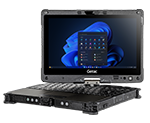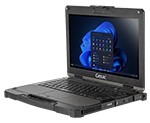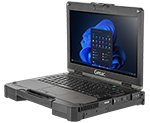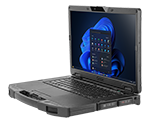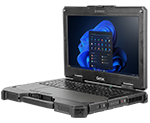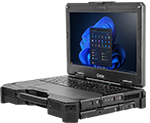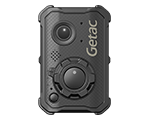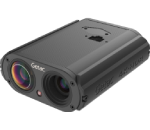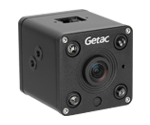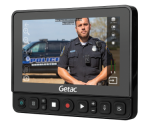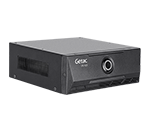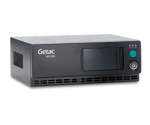When considering a rugged mobile PC purchase, the military has a lot to wade through. Many vendors will have their hands up, saying their stuff is military-grade. Some of it will be rugged and ready and certified accordingly. Some of it will be consumer-grade equipment with extra padding and camo paint.
When comparing vendors and models, you’ll face a deluge of features, terms, and specifications. There are so many that it can be hard to keep track of which are mission-critical, essential, and nice to have, and which just weigh you down.
It can also be hard to determine which features are table-stakes and which are the true standouts. Vendors don’t always do a great job of explaining why you need certain things or if you need them all. Given the long intended service life of a rugged mobile PC and the nature of your work, you don’t want to make a wrong decision.
Do Your Homework
When comparing different rugged mobile PCs, you will encounter terms like “ultra-rugged” and “fully-rugged”. The problem with these terms is they’re essentially marketing buckets. There’s no governing authority with formal definitions for them.
If a vendor does deem a model “ultra-rugged,” there’s a decent chance the military is an intended customer. However, not all vendors use the same criteria. One vendor’s “fully-rugged” may be another vendor’s “ultra-rugged”. Ruggedness isn’t just a matter of how many hits or vibrations a device can tolerate; there’s more to it. Look past the adjectives and focus on the features.
Rugged Mobile PC Military-Grade Features
What you exactly need varies by where the device is intended to be used. You may need to consider what it’s going to be used for, and what the governing mandates and regulations are for such devices. Getac considers a comprehensive guide to what might or must be included for a device to be considered suitable for military use.
Top-Of-The-Line Computing Capabilities
This is tricky, of course, because the goalposts for what is considered top-of-the-line move every year. One thing is for sure: given their long-intended service life, you don’t want to risk buying a device with only average computing horsepower at the time of purchase.
Rugged mobile PCs are increasingly being called upon to carry out mission-critical, computationally intensive tasks. These can include mission planning, situational awareness, and drone control. The greater the power and capability a computer has, the greater the number of tasks it can handle. This versatility dramatically compounds the value of these devices.
Even when not being called upon to do strenuous tasks, computing power also comes in handy during non-strenuous tasks. This can be done by minimizing the freeze-ups, slowdowns, and other hiccups that an average computer is more prone to. which can cost over an hour of lost productivity each time (according to VDC consulting) if they lead to a full-blown work interruption.
Extreme Stress Tolerances
If a rugged mobile PC has a MIL-STD-810H badge (previously MIL-STD-810G), it is certified as having undergone a barrage of stress tests for temperature, collision, vibration, etc. If a device has this badge, it’s worth looking at. But you’ll have to look closer as the tests it encompasses are not always equally strenuous. Drop tolerances will vary (military-grade is 3-6 feet). Temperature tolerances will also vary. Military-grade is -29°C to 63°C / -20°F to 145°F for operation -51°C to 71°C / -60°F to 160°F for storage.
An ingress protection (IP) rating is necessary if water and dust are concerns. A rating of IP65/66 means the device is fully operable in dust and rain. If there’s a submersion risk, you’ll want IP67/68 (operable after 30 minutes underwater or more). Salt fog/water tolerances are another consideration, which there’s no specific badge for, but a vendor will usually tell you if a model has it or offers it.
EM Safety
A MIL-STD-461G certification is another military must-have in many scenarios. A rugged mobile PC that is MIL-STD-461G certified has been tested thoroughly and evaluated for electromagnetic (EM) emissions and susceptibility. Therefore, it does not pose an interference risk to any RF communications or avionics that may be happening in the device’s vicinity, and vice versa.
Intrinsic Safety (ANSI/UL)
Military computers are often used in environments with a risk of the air containing explosive/flammable fumes, vapors, or particulates. Devices considered intrinsically safe in hazardous conditions will have some ratings. Look for ANSI, UL, ATEX, or IECEx badges (depending on where you are in the world).
Battery Features
Consumer-grade notebooks and tablets will give you some hours of intensive unplugged usage. Rarely will they last a standard 8-hour work shift. Rugged devices use more powerful batteries, trying but not always succeeding in reaching the 8-hour mark.
Military devices must be able to keep going well past that if necessary. The only way to guarantee that is if the device has two (or more) hot-swappable batteries. An exhausted battery can be changed out for a fresh one while the other battery powers the device without operational interruption. Preferably, this can all be done without tools.
Screen Features
A military-grade rugged device will have a screen that achieves sufficient brightness to be viewable under direct sunlight (1,000 nits minimum). It may also need to be sufficiently dimmable to be used in dark (which requires a high-contrast screen with deep black levels) and capable of being blacked out (along with any backlit keys) instantly.
If you need a touchscreen, military-grade means operability while wearing gloves, in wet conditions, or with a stylus (or all of these). You’ll also want a large screen with as high a screen resolution as possible. The more space/resolution a screen has, the more text/information you can fit on a screen. It will be easier for the worker to show videos and deliver briefings or presentations to groups of people.
Screen durability and temperature tolerances are issues to consider. Condensation in cold weather can make inferior-quality touchscreens hard to use. Cracked screens are a significant reason rugged mobile PCs get sent in for repair. Getac has a proprietary design for its LumiBond screens that no other rugged device vendor uses.
Wireless Features
Consumer-grade tablets and notebooks are Wi-Fi-reliant. A military-grade rugged mobile PC will also offer 4G-LTE capability (perhaps with dual SIM capability) for a more extended range, enhanced reliability, and greater ease of coordinating with civilians (i.e., CBRS). It may also offer Li-Fi technology (which transmits via lasers instead of radio). This is a keen area of military interest because external forces cannot hack, penetrate, monitor, or conventionally interfere with LiFi.
Rugged Mobile PC Aftersales Support
With their long-intended service life (5 years or more), you’ll want a long warranty, preferably “bumper-to-bumper” (i.e., no-fault). It is just as important to have a self-maintainer program for device management. This eliminates lag times involved when the vendor or other third party gets involved every time a device part needs replacement.
And support doesn’t just need to happen after the device has been put into service. Any supplemental help that can make procurement and deployment faster and/or easier would elevate military-grade contenders above consumer-grade pretenders.
Configurability & Accessories
Consumer-grade device vendors are pushing to make their mobile devices thinner and lighter. Manufacturers of dedicated physical media (i.e., memory cards and DVDs) are giving way to Cloud and streaming options. Configuration options are narrowing within the chassis itself. You may be offered “small, medium, or large” options in terms of RAM and data storage capacity. But if you want hardware capability that’s different or add-on, you’ll generally have to plug it in externally. Rugged devices are built for mobility and durability, and an external plugged-in device hinders both. They’re built to work, so the more tasks they can do, the better.
With a military tablet, you may be looking for asset ID, via RFID (including UHF RFID), or an internal laser barcode scanner. You also may want an attachable keyboard if you intend to read and communicate a lot via text. In a notebook, you may need additional means of sending and receiving information via fixed media (i.e., redundant storage drives and more physical media options). And you’ll want unfussy capacity expansion.
Suppose the device is intended for extended field use. In that case, you’ll want extras makes the device more mobile. This can include a vehicle mount, body harness, hand strap, or a variety of other ergonomic configuration options. Whether it’s a tablet or a laptop, security is a critical element of configurability. And we’ll get into that in part 2 of this blog.
